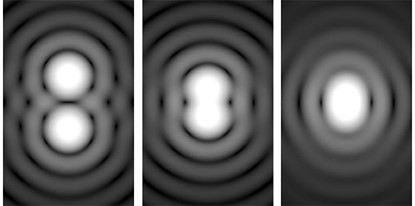We are proud to share that we achieved 90 nm spatial resolution on the LiveCodim super-resolution system. The LiveCodim, developed by BioAxial part of Telight, system is an add-on device designed for fluorescence microscopy. It employs structured illumination light patterns that are scanned across a sample to probe scales below the diffraction limit (200-250 nm).
Diffraction limit

This raw scan data is then put back together to build the final super-resolution image. It requires only an exceptionally low light flux to efficiently recover fine structural details from samples, making it an ideal solution for live cells or fragile samples. Our state-of-the-art image reconstruction algorithm – under active development—employs a sectioning method capable of distinguishing between features of the observed sample with different spatial properties. This reduces artifacts and background noise while enabling visualization of a significantly more precise result and pushing the boundaries of super-resolution to increasingly lower scales.
90 nm super-resolution measured by Gatta Quant nanorulers

The image below shows LiveCodim’s latest achievement in separating two beads on Gattaquant’s GATTA-STED nanorulers that are spaced 90 nm. These GATTA-STED nanorulers utilize DNA-origami to precisely control the separation of the two fluorophores. The development of the sectioning method within LiveCodim’s reconstruction algorithm has played a significant role in reaching this milestone. These improvements in image resolution without changing any hardware or requiring more intense illumination have enormous implications for the future of fluorescence imaging research using live cells.
“This accomplishment is the product of cohesive and dedicated efforts from our interdisciplinary team. It is a privilege to take part in the rapidly evolving field of light microscopy and we are excited to contribute to the future of the life sciences.”